 What is a Dancing Master?
What is a Dancing Master?
I was asked by Olivia Barry of Brasstown, North Carolina to give her my views on the topic, and (naturally) I decided the best approach was to write a web page. She wanted to know about the early history, and I asked, “What do you mean by early history? 1651 or 1900?” She said:
1651 through today — I am really interested in the development of the role (in the different countries which it has pertained to) and how that role can or cannot be emulated today. A lot of this curiosity is based off of a recent conversation with Bruce Hamilton and Frederick Park.
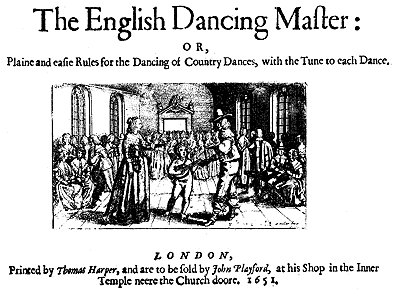
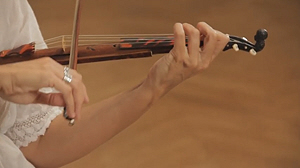
Heather Clarke — Dance Historian, Dance Teacher and Dancer in Australia — has sent me some fascinating information about John Playford's wife. Heather has discovered that Frank Kidson wrote a long article entitled “John Playford, and 17th-Century Music Publishing” in The Musical Quarterly Vol. 4, No. 4 (October 1918), published by Oxford University Press. You can read the whole article at jstor.org/stable/737877. Here's a quote from it:
John Playford was married about 1655-6, and his wife, Hannah, was talented enough to be mistress of a boarding school for young gentlewomen in the rural district of Islington opposite the church. In 1659 he advertises this school in his Select Ayres and Dialogue's as being “over against the church where young gentlewomen might be instructed in all manner of curious work, as also reading, writing, musick, dancing, and the French tongue.” It is worth while noticing that such schools where “musick and dancing” were taught were in existence during the stern reign of the Puritans.
Heather says,
It raises a number of questions, doesn't it? I wonder if she prompted John in anyway, or assisted in the collection and publication of any of the dance books.It's also important to consider the whole issue of the Puritanical attitude to music and dancing. Percy Scholes wrote a brilliant book about this: The Puritans and music : in England and New England : a contribution to the cultural history of the two nations. (1969). Oxford: Clarendon Press.
Percy argues, very convincingly, that dancing was only banned on the Sabbath and that lascivious dancing was banned — quotes regarding this have been misinterpreted to mean all dance was prohibited which was clearly not the case.
He argues that in the introduction to the English Dancing Master where Playford says “knowing these Times and the Nature of it do not agree”, he was not referring to the Puritans' attitude to music and dance, but rather: “the anxieties and disturbances of the landing and crowning in Scotland of the young Charles II were going on, with several battles in Scotland, Charles's march into England, and all those exciting events that led up to the Battle of Worcester six months later.”
This makes sense when you consider that Playford was a clerk of the church, and his shop was next door to the church. It could hardly been good for his career and business to be publishing something completely at odds to the teachings of the church.
Scholes also wrote:
Note, by the way, that during the Puritan regime this official of a Puritanized church advertised in one of his publication (Select Ayres and Dialogues, edition of 1659) his wife's school, where 'young gentlewomen might be instructed in:dancing..'
It's a fascinating book — there's a copy at Halsway Manor donated by Maureen Knight.
In 1728, John Essex (????-1744) in the preface to his book “The dancing-master: or, The art of dancing explained” gives a glowing description of one Dancing Master:
THE late Mr. Isaac, who had the Honour to teach and instruct our late most excellent and gracious Queen when a young Princess, fully gained the Character and afterwards supported that Reputation of being the prime Master in England for forty Years together: He taught the first Quality with Success and Applause, and was justly stiled the Court Dancing-master, therefore might truly deserve to be called the Gentleman Dancing-Master. His Qualifications were great; for he was both generous and charitable to all: He was an agreeable Figure in his Person, and had a handsome Mein joined to an easy Address and graceful Deportment, which always appeared without Affectation.
So let's think about the phrase “Dancing Master”. A Master is someone in charge, but it can also refer to someone who has “mastered” a skill such as horse-riding, or judo — or dancing. We also use the phrase “Master of Ceremonies” (usually abbreviated “MC”) and the MC at a Ball in the Bath Assembly Rooms might also be a Dancing Master, but not necessarily — the most famous 18th century MC was Beau Nash (1674-1761) and he wasn't a Dancing Master. When after 25 years he managed to become also the MC of Tunbridge Wells, his inability to speak French, the courtly lingua franca, was a decided disadvantage, and he ultimately employed Jacques Caulet, a French Dancing Master, as his assistant. Caulet took over as the Bath MC for a couple of years after Beau Nash's death but then decided the pay wasn't good enough. More information about the Bath Balls is available in this paper by Matthew Spring. One interesting quote:
The money was used principally to pay the musicians (who also performed in the Pump Rooms in the mornings for 2 guineas a week). The proprietor of the room made money from the sale of refreshments (tea, chocolate and coffee) and Nash, who orchestrated and directed the whole event, received nothing. Nash instead made his money from gambling — a source of income that gradually dried up as more and more laws were passed to prohibit it. He had not only to be a capable dancer, as he needed to take the place of any missing male dancers, but also to understand all the rules of etiquette and social precedence. He would visit new arrivals to ascertain their rank and fortune and thus be able to fit them in accordingly and to find appropriate partners.
Graham Christian points out that the Dancing Master, as with the French Master, the Riding Master, the Music Master and so on, belonged to an established job category. In almost all cases they were lower-born than their pupils, tasked with showing their young charges the appropriate demeanour and carriage of a class to which they themselves did not belong. In fact I'm currently reading a historical romance by Julie Klassen called (what else?) “The Dancing Master”. The protagonist was a Dancing Master in London but has been forced to move to a small village where the lady of the manor has forbidden dancing. She gives him a job as a clerk — presumably to stop him trying to take up his former profession — and as he leaves she warns him off her daughter,
I hope it goes without saying that, even though you are to work here under my roof, you are to have as little to do with Miss Midwinter as possible. You are not her social equal, you understand. She is destined for… greater things.
Jane Austen would probably not have needed to spell this out in the dialogue; her readers would have known it.
Later, when he manages to give his first dancing lesson to three people, we have,
The simple pattern repeated itself and the dancers became more confident. Faces relaxed as the need to concentrate lessened and the enjoyment of the dance took over.Alex began to remember why he enjoyed teaching. The pleasure of seeing the light of understanding spark in a pupil's eyes — the thrill of learning a new dance, of mastering steps at first deemed too difficult.
Yes, that's what it's all about. Not the opportunity to tell everybody what to do and then having them applaud you at the end of the evening!
What about Dancing Masters in other countries? They were certainly abundant in the United States, and some of them wrote books on dancing as did those in England. My impression is that all such writers bewail the fact that dancing isn't what it used to be. Thoinot Arbeau (1520-1595) in France in his Orchesography in 1589:
Our predecessors danced pavans, basse dances, branles and corantos; the basse dance has been out of date some forty or fifty years, but I foresee that wise and dignified matrons will restore it to fashion as being a type of dance full of virtue and decorum.and I don't suppose he was the first. Of course he was kidding himself — things are always moving on and the “good old days” never return.
And Elias Howe (1820-1895) in America in his Complete Ball-room Hand Book in 1858:
Fifty years ago or more, the Country Dance was the only one danced in this country, except in the cities and large towns, where several fancy dances were occasionally performed; but even in those places the country dance reigned triumphant… It was then the custom to take all the steps in each of the different changes, and to introduce the “Pigeon's Wing,” or some other flourish, as often as possible; dancers at that time often boasted that they “put in so much work” as to wear out a pair of dancing slippers in one evening. The walking or sliding through the different changes, so fashionable at the present day, would have filled our forefathers with horror and disgust.
By the way, this Elias Howe was not the same as the Elias Howe (1819-1867) who invented the modern sewing machine.
And Thomas Wilson (1774-1854) in England in his Treasures of Terpsichore in 1816:
It is I believe notorious, that if Country Dancing continues to decline as fast as it has done for sometime past, that the once delightful amusement will shortly dwindle into mere running, and that beautiful regularity of movement, which should always be displayed in a Country Dance, be perverted into a chaos of riot and confusion. [And he goes on in this vein for 24 pages.]
Not that I'm any better! When I started dancing in England there were plenty of Traditional English (now known as “ceilidh-style”) dances to rants, hornpipes and polkas in addition to the slow graceful ones; now most are walked. And when I moved to The States in 1997 for a year I chose the Boston area because I wanted to attend the Wednesday English dance in Boston with Bare Necessities and the Monday American dance at the Scout House in Concord, Massachusetts with Tony Parkes and Yankee Ingenuity. The English dancing under Helene Cornelius was all that I expected, but I found that Tony Parkes' popularity had slumped and the Monday dance now featured a range of callers. For me it was a great disappointment. Many of the dancers didn't fit the figures to the music (which was excellent, I must say), and I felt that they didn't care, so long as they got a partner swing and a neighbour swing in every dance. I believe that when Tony was in charge the dancing was much better. And he would always call some “chestnuts” — the old traditional contras like “Money Musk” (loosely based on the Scottish dance “Monymusk” as is the tune) and “Chorus Jig” where the “actives” really were active and the twos played a subordinate role — those had been pretty much dropped from the repertoire. In 2016 I went there again, found that things had changed even more, and I don't think I'll go back.
Perhaps it was a sign of the times that in 1872 a book was published (anonymously) in New York, with the reassuring title “Ball-Room Dancing Without a Master, and complete guide to the Etiquette, Toilet, Dress and Management of the ball-room; with all the Principal Dances in Popular Use”. The publishers are very clear in their intentions:
A book giving a simple description of the dances in popular use, free from the usual technicalities, has been long desired. To meet this want the publishers have engaged a celebrated professor and teacher of Dancing to write a book that shall supply this deficiency. In this the professor has been eminently successful. We may confidently assert that any one can, by the aid of this book, become proficient in the art of Ball-Room Dancing.
This really is a do-it-yourself guide with a lot of practical advice on organising a ball and what to wear, as well as how to do the dances. I see this as the American attitude coming across — away with all those fussy European conventions designed to intimidate the rest of us:
Formerly at public balls a Master of the Ceremonies was considered indispensable; but this custom is going out, and his duties are performed by the stewards
And advice which the Dancing Master would no doubt have given his charges in private:
Young gentlemen are earnestly advised not to limit their conversation to remarks on the weather and the heat of the room. It is, to a certain extent, incumbent on them to do something more than dance when they invite a lady to join a quadrille. If it be only upon the news of the day, a gentleman should be able to offer at least three or four observations to his partner in the course of a long half-hour.
And implied criticism of the Dancing Masters themselves:
It is well not to learn too many new figures: the memory is liable to become confused amongst them; besides which, it is doubtful whether your partner, or your vis-à-vis, is as learned in the matter as yourself. Masters are extremely fond of inventing and teaching new figures; but you will do well to confine your attention to a few simple and universally received sets, which you will find quite sufficient for your purpose.
And reassurance that “you can do it”:
People now generally walk through a quadrille. Nothing more than a perfect knowledge of the figure, a graceful demeanor, and a correct ear for the time of the music are requisite to enable any one to take a creditable part in this dance. Steps are quite gone out of fashion: even the chasse has been given up for some time past.
And finally, none of this “foreign” nonsense:
Throughout this work we have endeavored to avoid as much as possible the use of French words, and to give our directions in the plain mother tongue.
though he then gives the meaning of 55 French terms.
I'm not knocking all this, honestly! It's a reaction against all the formality and intimidation of the European tradition, and a breath of fresh air to those who would otherwise never attempt such a thing. In fact at the end of the book there are adverts for several other teach-yourself books: Elocution, Grammar, Public Speaking, Letter-writing, Singing, a Sure Guide to Rapid Wealth, and many more. But back to the Dancing Master.
I believe that a Dancing Master (whether called that or not) has a personality which shines through his or her teaching. When I say “teaching” I mean more than just giving out a string of figures; I mean doing whatever is necessary — such as demonstrating individually or as part of a set — to ensure that the dancers understand how the dance works, how the figures join together, how it fits to the music, what style is required when. Dancing Masters were never bland and self-effacing; they believed in what they were teaching and they taught it with conviction. This might or might not make them popular with the dancers!

At Chippenham Folk Festival one year I passed Pete Hendy in a corridor and it turned out we were swapping workshops. I'd got irritated by the person running the one I'd been in, and Pete (who is well-known as being friendly and easy-going) said, “If I stay with that woman any longer I'm going to be really rude to her”. She had stopped a walkthrough and said, “Zhat tall man, ze turn single is to ze right”. Pete had the temerity to reply, “Well, I think it flows better turning to the left”. Fried had a swift rejoinder: “We will not continue ze dance until zhat tall man turns single to ze right”.
Fried intimidated many dancers, and also some musicians. Probably that same year at Chippenham, one of the bands asked fiddle player Dave Brown (who wasn't intimidated) to sit in with them, and then positioned him next to Fried so that he was the one she would communicate with. She was going to call one of my dances, so she set the speed and got the band to play it once through. Dave must have spoken to her, since she said over the microphone, “Colin, the band tell me you like that a lot slower”. “Well yes, I do”, I replied. “I don't”, she said decisively!
And I know I intimidate some musicians too, though I don't intend to. I think it's partly that they don't expect the caller to know much about music, and I do. If it's one of my tunes I'm likely to say (without raising my voice, I promise you), “I couldn't hear the diminished chord in Bar 7 of the A-music”, and they look embarrassed and say, “Ah, I probably wasn't playing it”. So is one aspect of a Dancing Master that people are scared of him or her?! It seems to be common, but not universal. Betty Chater, for instance, was an inspiring teacher and I don't believe anybody was scared of her. But I know people who were very scared of Wendy Crouch. And yet I thought she was terrific and always got on well with her. We certainly didn't agree about everything, but she was a really good caller, wrote some very interesting and challenging dances (often in odd formations), and was an excellent organiser — when she started the Southam Weekend it was a success from the start because everybody realised that Wendy knew what she was doing.
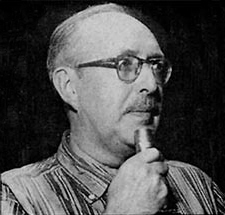
I think that most of the International dances are grand and the tunes and figures delightful, but because of my background I specialize in the American dance and keep the others as a sideline. Throughout the years I have come to appreciate both types of folk dances more and more. One other thing — I insist on my sessions being clean and wholesome. I will not tolerate drunkenness or rowdyism. I let people have a good time, you understand, but there is a difference between a good time and a brawl.
He also produced reconstructions of early American longways dances such as “The Market Lass”, “The Doubtful Shepherd” and “British Sorrow”. Between 1949 and 1984 he edited, mimeographed and distributed 165 editions of his magazine “Northern Junket”. These contained his and other people's articles on dancing — contras, squares and folk (international), plus folk songs, folklore, ghost stories, book reviews, wedding announcements, reviews of folk festivals and more. They also included editorials expressing his strong opinions on all matters related to folk music and dance. In the first issue he said,
We have no axes to grind; no burning mission to perform…
and it contains the start of a description of a kitchen junket (which continues through the next three editions), including:
The music goes faster and faster. The swings more furious. The balancing more spirited and complicated… “What's the matter, Wallace? Can't you play any faster?”… Forgotten were all the niceties taught us by village dancing masters. Who could be sedate and pickle-faced when fiddle and banjo were racing through the Reel of Stumpie. Pigeon wings. Cooper step. High Betty Martins. Brazing step. All the plain and fancy jig steps…
And yet later he would say
I have insisted that the dancers act and behave like ladies and gentlemen! That a “ladies chain” should be done with a courtesy turn instead of a lot of spinning and twirling; that a “balance partner” is not an excuse for dust-raising pawing of the floor like a herd of love-sick buffalo; that wild uncontrolled swinging should not be allowed… I believe that you should treat the dances of our own country with respect and dance them with pride and a “wee bit of elegance”.
So what changed? I haven't found out yet, but maybe reading through these magazines will tell me more. I would certainly consider Ralph Page to be a Dancing Master. In the first issue he gives his take on the history of dancing — some of it complete fabrication:
Dancing in England probably reached its zenith at the time of Queen Elizabeth, who commissioned John Playford to collect all the dances of the country. He did such an excellent job that he was knighted.
and some of it (I hope) more accurate when talking about early days in America:
Most towns had a dancing school at least once a week. At these schools or “dance academies” the young people were taught not only the figures of the dances, but also manners and decorum as well. Many of the dancing masters would have a circuit and each night of the week would find them in a different town. The classes usually lasted about two hours and were followed by general dancing for anyone who cared to attend. They brought a fiddler along with them who furnished the music for the class, and depended on local talent to complete an orchestra for the general dancing.
Digital copies of all these are held by the University of New Hampshire — scholars.
I've transcribed all the Squares from Northern Junket and in some cases added my own comments or changes.
I never met him — I didn't get to The States until 1992 — but Victoria Bestock who now lives in Seattle, says,
You are right about Ralph Page (who was teaching / calling contras in Boston when I lived there in 1964-66) — he, like Fried, was very particular about how people did things, wanting to preserve a style of Northern dancing that differed from southern squares even though some of the terminology was the same. Ralph would yell at people doing something different from the way he wanted it, and people, terrified, attempted to do what he said. I was horrified when I later saw chugging on balance steps in contra dancing for the first time — that was Appalachian, not Northern style. But things have kind of mooshed together and some of those stylistic differences are now lost.
Dudley Laufman says,
Them old time dancing masters from Aberdeen that could play their fiddles and dance at the same time, they had their territory mapped out about 20 miles radius and woe-betide anyone who tried to set up business on their turf. Eightsome Reel, Strip The Willow, Circassian Circle were dances they did. New students each year rather than new dances. Would hold classes in barns or tavern rooms — one village one night, another the next. Travel from place to place on foot, bike or train. Sleep under a bush if the weather was kind, or at the tavern, then hold private classes the next day. If it was close enough, they'd go home. It was their job. A business that they could pass on to a son or daughter.Across the pond here not as many dancing masters that could play and dance same time. Territories overlap and no problem. They did other things. Edson Cole from Wolfeboro, New Hampshire, had a farm, managed another, as well as being town clerk and road agent. At his classes he used to say 1-2-3-Balance with me, and if you can't do that, go sid daown. His Uncle Jim Cole from Limerick, Maine, logged with horses and drove a mail route. Abijah Benton was a barber and taught dancing school in Surrey, New Hampshire. Ralph Page said his sawmill operating grandfather in Munsonville, New Hampshire, was a dancing master, but on further thought said he was a master dancer. In today's jargon, they all had what we call Day Jobs.
Going back some years, probably the best-known Dancing Master in America was Benjamin Lovett (1876-1952) who was hired by Henry Ford to teach people “the old dances”, rather than the new jazz dances such as the Charleston which Ford regarded as promiscuous. Lovett wrote the book “Good Morning” which was published in 1925 under the names of Mr and Mrs Henry Ford — you can see a few pages of it here or you can buy an original or facsimile on Amazon and other places. In fact it's now available at books.google.co.
The steps are somewhat complicated and require a great deal of practice. It will be found desirable to obtain instructions from a dancing master or other person thoroughly familiar with the movements.
A revised edition was issued in 1926 — that's the version in the two links above. The first two editions begin with essays on etiquette and technique. Subsequent editions from 1941 and 1943 are credited to Benjamin Lovett and provide expanded musical accompaniment, but no longer include prefatory essays.
There are so many good quotes in this!
Never imitate another unless you have satisfied yourself that he or she is a better dancer than you are.Many really good dancers are usually ahead of the music, but it is difficult to convince them of the fact because they do not listen.
The first counsel in deportment is to be natural, be yourself. You are not on exhibition, you are only one of an assembly.
And presumably this is Henry Ford writing:
Ballroom dances are divided into two general types — round and square. Round dances are those in which one couple forms the unit, as in the waltz, polka, two-step or gavotte. Square dances are those of the group type, in which several couples make up the unit, as in the quadrilles and reels…The square dances are rapidly returning to their original popularity. Their eclipse by the round dances has proved to be temporary. The modern dances with their lesser demand for skill and spirit, their tuneless music, their tendency to jazz, their essential unsociability, are losing vogue everywhere.
Yes I know Henry Ford was racist and anti-Semitic — apparently he believed that the Jews had invented jazz. I'm not concerned with that here — I'm talking about Dancing Masters.
I got some of the information about Lovett and Ford from cambridge.org/core/journals/
The features of the social dances championed by the Ford Music Department suggest that they may have served as an object lesson in the virtues of modern factory work. The dances bore a strong resemblance to Ford's moving assembly line. First, group dances like contra dances are activities in which individuals or pairs of dancers execute interlocking patterns of movement that propel couples down the line towards one end of the hall. Second, group dances require the individual to execute precise, efficient movements in exact time. If a dancer loses a step or miscounts, the dancers can lose their places in the line. The Early American Orchestra drove the rhythm and tempo of the dances with the same efficiency as the motors propelling the assembly line. Finally, the dancers must defer to the authority of the caller. If the dancers fail to respond properly to his instructions, the line breaks down.
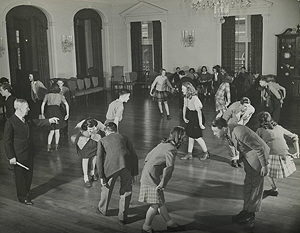

Ford also built a beautiful dance hall — unfortunately now run by the Catering people so you can have a very expensive wedding reception there but no-one can afford to dance there, though the coloured photo comes from the Lovett Hall contra dance Facebook page.
Shirley Worth says,
As a Detroiter, I loved your inclusion of information about Lovett Hall, where I — along with hundreds of others — was introduced to Contra Dancing at the “American Contra Dancing” series led by Dancing Master Glen Morningstar with music by the Ruffwater String Band, which ran on the First Sundays of the month for 24 years, 1981-2005, ending after — as you mention — the Catering Department took over management of the hall. The color photo you include was taken by acclaimed photographer Doug Plummer of Seattle (creator of several years of Contra Dance Calendars), who traveled to Michigan for the special dance in 2012, commemorating the 75th Anniversary of the Hall.
The monochrome photo is from thehenryford.
Students attending Henry Ford's Edison Institute Schools received instruction in old-fashioned dancing from Benjamin Lovett. Lovett not only taught them dance steps, but also good manners — the dance classes were exercises in social training as well. This photograph was taken just a few months before Lovett retired — after serving as Henry Ford's dancing master for over two decades.
And teaching good manners was certainly part of the earlier Dancing Masters' job too. For instance, The American prompter and guide to etiquette (E. H. Kopp, Cincinnati, c.1896) has a long list:
Careful study of the three following pages will be extremely beneficial, as the rules of etiquette therein outlined, are everywhere recognized as being eminently proper and correct
- The first duty of a gentleman after entering the ballroom with his partner is to procure a program for her, and to introduce to her his friends.
- A gentleman should invariably dance the first number on the program with the lady whom he escorts, or at least offer to do so, and see that she is provided with a partner whenever she wishes to dance.
- Always remember that ladies are to be cared for first, and are entitled in all cases to your courtesy and protection.
- Should a lady desire to leave before the close of the reception or ball, her escort should cancel her engagements and also his own.
- A gentleman should not ask a lady to dance with him without first being introduced to her.
- Click to see all 33 points
What place is so proper as the assembly-room to see the fashions and manners of the times, to study men and characters, to become acquainted to receive flattery without regarding it, to learn good breeding and politeness without affection, to see grace without wantonness, gaiety without riot, dignity without haughtiness, and freedom without levity?
I'm wondering whether “affection” should be “affectation”.
He gives four pages on “Etiquette of the ball-room”, including:
- Any couple refusing to stand up when the dance is called, shews great disrespect to the Lady that calls it.
- The Master of the Ceremonies can object to any call that affords reasonable grounds for complaint, such as length or difficulty of figure; but the couple whose call is rejected, have the liberty of calling another dance less objectionable.
- Should any couple, after calling the dance, find themselves incapable of performing it, they may call another, but if the same difficulty occurs in the second call, the Master of the Ceremonies can transfer the call to the next couple, and place the couple that failed at the bottom of the dance or set.
- No person must, during a Country Dance, hiss, clap, or make any other noise to disturb the company.
- A dance cannot be called twice the same evening.
Dancing etiquette is a very important subject for your square dance classes. How are your students to know that they should not leave a square when they see another they would rather be in? You must tell them to save them embarrassment. The man with the smell of liquor on his breath is usually out of place at a square dance but he cannot know this unless he is told. For the sake of the group, everyone should know that cleanliness and the use of deodorants is essential for dancing. These things are not always easy to say to a group of dancers over a microphone and under the best of conditions, they require a very careful choice of words to avoid embarrassing the people on the floor. They are, however, things your students need to know and you are the teacher, it's your job to tell them. Don't shirk this duty and remember that you set an important example to them.The topics I have mentioned aren't the only points of etiquette that should be mentioned. Dancers are well advised to avoid telling someone else how they should have done the last figure, to refrain from telling someone who has just filled an empty space in a square that it is being held for another couple, to walk through a figure cheerfully because there may be someone in the square who could benefit from the help. You can probably add many more to the list. Don't be close mouthed; tell your students anything that will help them to be better and more courteous dancers.
Another country where the Dancing Masters flourished was Scotland. Joan F. Flett and Thomas M. Flett in their authoritative book Traditional Dancing in Scotland (1964) say on page 6
It is essential to realize also just how thoroughly the teachings of professional dancing-teachers permeated the structure of social dancing in Scotland, for before 1914 most young people in Scotland attended dancing classes at some time or other.
Yes that's over a hundred years ago, but it's not back in the days of John Playford and Jane Austen; it's comparatively recent.
Chris Brady gives information about Dancing Masters in Ireland:
It was the travelling dancing masters who spread the fashionable dances not only throughout their 'patch' but across counties and countries. Often they frequented the balls in the fashionable centres such as Brighton, Bath, Bristol, Paris, and then having learnt the latest tunes, dances and steps proceeded to teach these to their students as they roamed the countryside from one village to another. Often they would be given food, board and lodging in return for free lessons.Examples of such dancing masters are described not only in the two Scottish books published by the Fletts, but also in their now somewhat forgotten and ignored Traditional Step Dancing in Lakeland.
Travelling Dancing masters were also well documented in Ireland. Often they would attend the formal balls at such as Dublin Castle and then teach the latest dances and steps as they travelled from village to village. This is well described in the book Terpsichore — Her Votaries and Fashions, Dublin 1898 by T. Leggett-Byrne, and also evidenced by Kate Hughes' “Dundalk manuscript” from dancing master Arch. Thomson (Aseh. Thomson?).
Breandán Breathnach also describes the travelling dancing masters of Ireland in Folk Music and Dances of Ireland (1971). Indeed he mentions that in rural districts attendance by young folk at the 'hedge schools' was multiplied if the teacher also taught dancing.
There's a delightful description of an innovative dancing master — Buckram Back — teaching his troupe for a display competition in a rural town in Ireland: web.archive.
org/web/20230925083914/ http://www.aughty.org/ pdf/dancemaster_fiddler.pdf
To me a Dancing Master is someone who not only teaches the dances but tries to get people dancing better — a teacher, not just an explainer. He (or she) has a certain vision of the style required, and tries to put this across to the dancers. Fried de Metz Herman was a perfect example of this approach.
I also feel that a Dancing Master should have some knowledge of forms of dance other than those he or she teaches, to understand something of the historical and social context of their dance forms. In addition to Playford, American Squares and Contras I have a working knowledge of historical dance including cotillions and quadrilles, Irish set dance and Scottish country dance. See for instance my pages on Connections and Regency Dance.
Of course the flip side is that the phrase can sound pretentious and arrogant. I don't describe myself as a Dancing Master, but as a Caller and Teacher.
That brings me to two other terms: “Caller” and “Prompter”. I think of these as originally American, and as meaning the same thing. A caller would not be a teacher in that context. At an evening dance he would not be expected to take someone's place and demonstrate a figure — the assumption was that these had already been learnt and now people were putting it all into practice. For instance, the Prompter's Pocket Instruction Book published in 1892 is by “Prof. L. H. Elmwell, Boston's Popular Prompter”. It starts with advice on how to do the job — what sort of voice you need, how to fit the calls to the music and so on, and then gives the instructions for a number of quadrilles (squares) and contras (longways for as many as will). The prompter was a different person from the floor manager, but would you consider him a Dancing Master? I don't think so.
“Caller” is the word used for English and American dancing these days, but when Cecil Sharp (1859-1924) revived interest in folk dancing the word was “teacher”; it was Douglas Kennedy (1893-1988) after the Second World War who changed the terms from “teacher” and “class” to “caller” and “club”. Scottish dancing as promulgated by the Royal Scottish Country Dance Society (RSCDS) still sticks to the old nomenclature — and it shows. Scottish teachers are expected to teach, and to improve the standard of dancing, though they are told not to single out individuals for criticism (which doesn't help me — I want to know if I'm the one doing it wrong). And they're not callers — they will walk a dance through carefully, usually for each leading couple in turn, but once the music starts they don't normally say anything and they certainly don't have the calling skill of saying just the right word or phrase at the right time — the dancers are expected to learn the dances. So are the RSCDS teachers with their certificates Dancing Masters? Some of them certainly are, but it doesn't just come with the certificate. I believe many certificated teachers do it by rote, following everything they've been taught without ever questioning it or coming up with their own ideas. For instance, I've heard good Scottish dance teachers complain that when teaching certain things it's laid down that you must stress certain points — even though the dancers are all doing it perfectly.
Let me say more about how I differentiate between a caller and a teacher. At The Round in Cambridge I see many callers — they're mostly inexperienced and it's a great environment in which to learn. Many of them just read the instructions from the card or book — they've never thought about how the dance works, how it fits to the music, which bits are hard and need explaining carefully or walking through again, and so on. They also call continuously through every turn of the dance, even if it's a dance that most of the dancers know better than they do themselves! A good experienced caller shouldn't fall into any of these traps. But there's more to being a teacher than being a good caller. There are top callers in England who don't do any teaching. I believe a good teacher will inspire the dancers to dance better. A caller has a short-term goal — to give the crowd a fun evening. A teacher has a long-term goal — to teach people how to dance better so that they get more out of it and will dance better at the next event they go to. And sometimes the two goals are incompatible — some callers are crowd-pleasers who will never do or say anything that people might not like for fear that they won't get booked again. I get tremendous satisfaction from helping a new dancer and watching them become more proficient over the weeks and months, and I accept that my style isn't to everyone's taste and plenty of people will never come to my dances and workshops.
I'm certainly not saying that there's a dichotomy between “having a good time” and “dancing well”. Of course I enjoy the dancing more when I and the other dancers are dancing well. But there are some people who think that any kind of teaching at a club night constitutes spoiling their fun, and there are callers who go along with this, afraid that if people aren't having fun they won't come back and there won't be any opportunity to teach them anyway.
I also think a teacher is willing to take the time to teach something correctly, and if necessary get down on the dance floor and demonstrate the way they would like a move done, rather than hiding behind their microphone and dance cards.
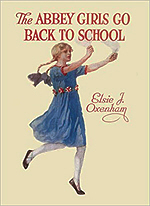
From her chair she gave swift clear directions; then came down to be 'first man' and show them what she meant. 'Now try that! Don't be silly, Violet. There's nothing to laugh about. Just nod to Jack and turn away quickly; you haven't time for more. Can't you feel the music driving you on? Some of you don't seem to feel the — the push the music gives you; the swing of it. Don't curtsey, Maud; there's far too little time; just nod. Now both hands to the man and turn gently, running. Lift the girls' hands as I told you, boys! Don't grab hold of them so roughly. Now try again!
Later several of the girls go on a four-week dance school in Cheltenham run by the EFDS. EJO isn't willing to give real names, so she gives nicknames to the teachers, who include Helen and Douglas Kennedy, Daisie Daking, May Gadd, Maud Karpeles, and of course Cecil Sharp. It wasn't just Playford dances: they were also taught traditional English dances, Running Set, Morris dances from several traditions, and folk songs including sea shanties. I find EJO over the top in her descriptions of the dancing, but it's obviously the way she herself felt about it, and I'm not complaining.
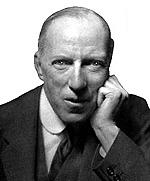
In addition to the Wikipedia article you might like to read sfdh.
A great champion of the Abbey books is Allison Thompson — caller, musician and dance historian from Pittsburgh, Pennsylvania. To find out what order to read the books in (which is different from their publication order), see ejosociety.org/her-books. You can also see the archived page web.archive.
And you can actually read some of the Abbey books online at fadedpage.com/csearch.
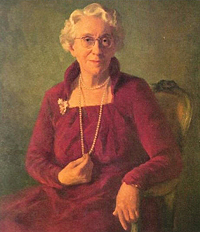
As with Cecil Sharp, she was certainly a Dancing Master, whether you agree with her approach or not. She was passionate about what she believed, she laid down the law and made sure that people were doing what she taught. As with the many Dancing Masters I've quoted, she lamented that dancing wasn't the way it had been in “the good old days”, but she had her own ideas about how things should be done and makes Sharp seem a model of informed research compared to her often baseless pronouncements. Like Ralph Page she objected to jazz and much modern music.
In her book “Won't you join the dance?” she gives her view of one figure,
Poussette is one of the most common methods of progression. It is found in the dances of the late 18th and early 19th century chiefly, and seems to have been the forerunner of the waltz. Its name comes from the French “pousser,” to push, and that to a certain extent describes the movement of the man in this formation. When the S.C.D.S. was formed, this form of progression had lost its original, dignified shape. Probably the introduction of the waltz had affected it, for instead of the traditional two-hand hold, partners joined as for a waltz or polka and danced round each other with a kind of hop waltz step. This led to untidiness and lack of control, and even to jazzing. The Society returned then to the old form and the poussette is done as described.
But a contrary view is (rather cautiously) expressed in the post by Marjorie McLaughlin in the above link:
We dance and teach based on many of Jean Milligan's conclusions, and many of them have proven to be successful, popular, and worthwhile. Her profound influence as a teacher and formulator of 20th century Scottish Country dancing cannot be underestimated. As has been noted, she could command a roomful of dancers with the wave of a hand. But to accept without question or investigation, worse yet to ignore historical evidence, is not worthy of our dance form and its complex and fascinating history. We have an enormously successful modern form of Scottish Country dancing. For that we have to thank Miss Milligan, and others. But it evolved from dance forms older and different than what we practice today, and to say that today's is “correct” to the exclusion of all others leaves us without the chance to learn and adopt from the past. Many of our accepted methods were presented to us as “correct” supposedly from historical evidence and in fact were modified without being so noted.While it is not possible to detail the evidence in this posting, readily available historical evidence can show that a number of our dance figures were amended when adopted by the Society (based usually on Miss Milligan's conclusions). But, corner/partner/corner/partner, the poussette, double triangles, among others, have been danced differently in the past. While there may have been good reason for the changes, I am chagrined by the fact that none of the early Society books admit to the reconstruction. The dance and figure instructions are presented as though no modifications were made. The briefest of citations at the bottom of the dance instructions would lead one to the conclusion that the dance is presented as it was in the old books/manuscripts. Not so. Many changes were made, at times there is virtually no resemblance.
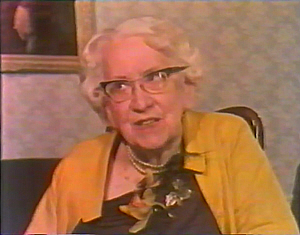 Click the image to see an interview with Jean Milligan from the Grampion TV series in the 1970's. I know Cecil Sharp changed the tunes of many of the old dances he interpreted, but he always said “To the tune of…”. I don't think Miss Milligan did that, and it seems that she generally disregarded the original tunes. At 3:26 she says,
Click the image to see an interview with Jean Milligan from the Grampion TV series in the 1970's. I know Cecil Sharp changed the tunes of many of the old dances he interpreted, but he always said “To the tune of…”. I don't think Miss Milligan did that, and it seems that she generally disregarded the original tunes. At 3:26 she says,At the beginning we had a special committee made, and the Duchess of Atholl, who was a very fine musician, and some of her friends, did the picking of the tunes for us, and then Mrs Stewart and I met to dance through the tunes picked, and she played the chanter [that's the mouthpiece of the Scottish bagpipes] and I danced, and I played the piano and she danced — and we decided if it was a tune that gave us the right impulse for the dance. And then after that, when they retired, I have really done the music myself.And also notice at 4:22,
But people just now have got a kind of passion for inventing danceswhereas an old dance — and then she wisely qualifies this — a “good” old dance, has really lived — flows, and becomes part of the music. Of course I agree with this, though there are a lot of “bad” old dances! But then she says
The music really comes first; the dance should be written to the musicwhich seems to contradict her first quote.
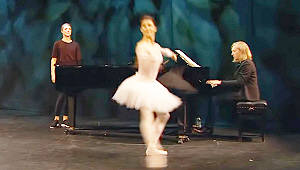
There are many fascinating YouTube videos of rehearsals at the Royal Ballet, with an audience — these are to persuade people to come and see the ballets. Click the image on the left to see one. I've started it when the soloist has been dancing her first entry and then the teacher Zenaida Yanowsky corrects all sorts of little things that an amateur like me would never have noticed. Around 35:52 Wayne Sleep is doing the coaching — great fun, a real entertainer — but he knows exactly what he wants them to do and he makes sure they do it.
I realise this page has become somewhat discursive (that's a polite word for rambling) because I've thought of all sorts of things as I was writing it, but that just goes to show that there are many aspects of being a Dancing Master. There are lots of questions here, and I can't draw all the threads together and be definitive about what a Dancing Master was in the past or is today. And what of the future? If this kind of dancing survives, there will undoubtedly be changes and people will undoubtedly say that “It's not like it was in the old days”. But that's life — it evolves and changes. You can't put it in a glass case and say “That's the way it must always stay”.
I put the question to Anne Daye. Anne was Chairman of the Dolmetsch Historical Dance Society (now simply the Historical Dance Society) for many years, and also has professional experience as a dance teacher-trainer, so she knows what she's talking about. She comments,
I would say that from the early sixteenth century to the present time, a dancing master or 'mistress' operates in a fairly similar way, only the techniques they taught changing across time. They are freelance professionals whose living depends on meeting the needs of clients — this would be teaching them the skills necessary for social dancing (a necessity up to WW2 roughly) or today teaching ballroom, ballet etc. as a preparation for future professional career or part of childhood education. They tend to be solitary and in competition with other nearby dance teachers, and there is very little professional framework or support for maintaining standards. This was a problem noted in the mid-18th century and never resolved since. When dancing teachers were challenged in 'standards' with the arrival of ragtime and easy dances not needing a teacher, c.1900, the need for an organisation to maintain standards was vigorously discussed, The result was several organisations — ISTD, BBO, IDTA, RAD — in competition with each other. Around 1990 they all strove to get the government to introduce proper regulation for dance teachers, but that has fallen by the wayside (there was once an All-party Parliamentary committee for Dance) and I doubt we will see any progress in our lifetime. Since 1990, the dance profession has been further complicated by the university dance degrees, and the postgraduate teacher training dance courses focus on educational dance for schools, and even they have reduced in number in recent years.Yes, all successful masters/mistresses should demonstrate well, be musical, know the components of their technique inside-out, operate safely (physically, mentally, socially). Most of them teach children so having rapport with them will lead to success, as will be maintaining a discipline which is best if it is kindly. Being inspirational as a teacher is always good. A good name is a benefit. In many fields of dance 'who did you learn with' is a leading question.
As Matthew Spring rightly says, the MC for 18th century assemblies regulated the ballroom and certainly needed to be knowledgeable about dances (as most of society was) but an employee of the assembly rooms not always a dancing master. Calling dances is a 20th century development for country dancing of various kinds as people knew less. The disciplines of teaching and calling are different on the whole. Again I would agree that a dancing master seeks to nurture grace and understanding across time. Masters are committed to pupils 'getting it right' whereas callers aim for everyone to have a good time, and manage a crowd.
The trouble with a ready answer is that dancing today is a very multifarious field — but I still see a constancy in the activities of a regular teacher of dancing.
And finally, Playford. Certainly the book was not aimed at dancing masters but the gentry with a bit of money to spend. I think the title may have meant that the book was a 'dancing master' with a handy guide to dances, or that the contents were from dancing masters. I think people forget that JP was only a music printer. The 'English' bit, taken out from second edition, is also puzzling — again it may have been meant to indicate that this was a contrast to the mainly French dances of the court. This may be something we can debate in the on-line Playford conference.
Olivia asked me whether I thought Dancing Masters would ever come back into fashion, and I'm afraid I don't. We're no longer living at a time when dancing was an essential part of an educated person's upbringing. For most people these days, “dancing” means disco dancing or ballroom dancing. Our kind of dancing serves a niche market, and most people who do it aren't that interested in doing it well; they just want to enjoy themselves occasionally. Olivia and I are part of a very small minority who enjoy dancing well and would like to encourage other people to do the same, but it isn't going to happen!
My thanks also to Bruce Hamilton for his insightful questions and comments about this page.
